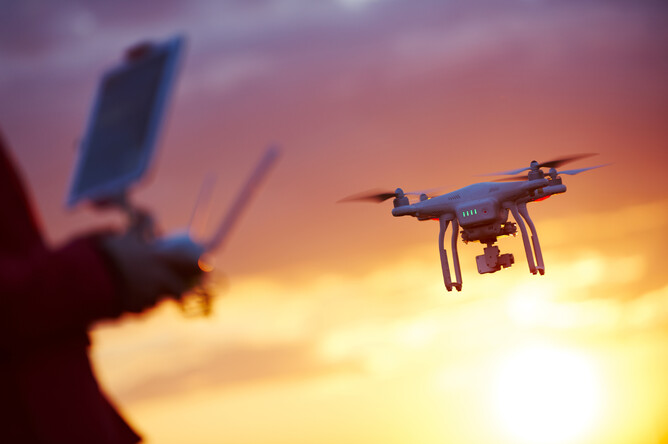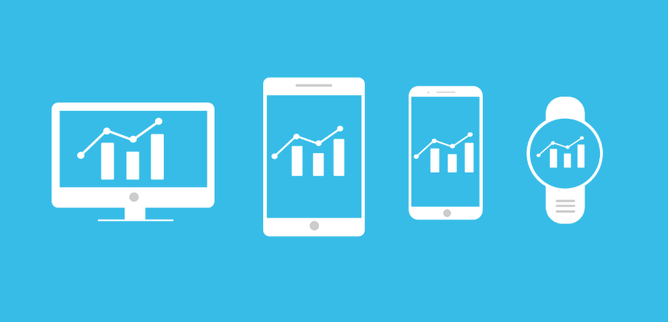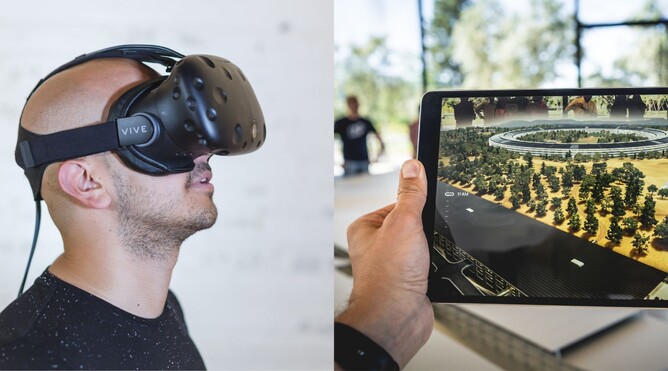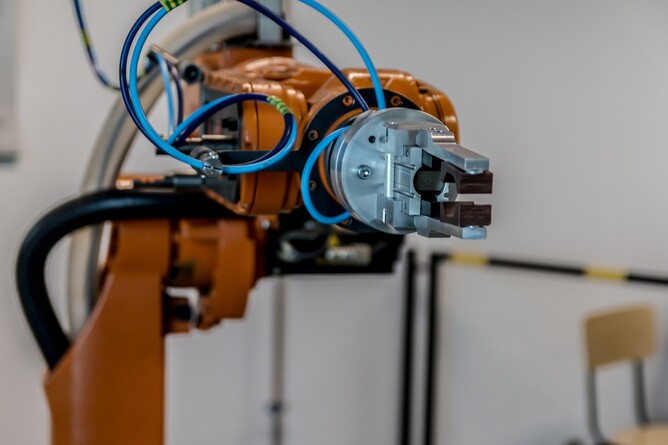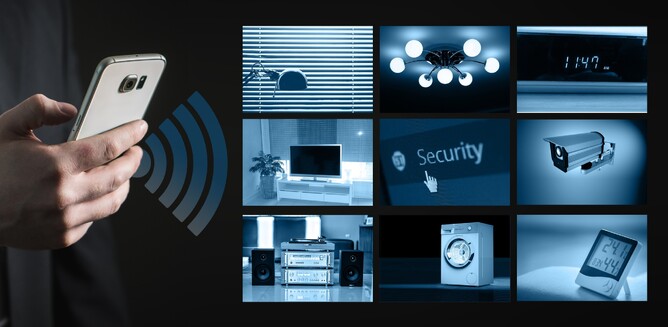2020 is just around the corner which makes those of us who are Baby Boomers or Generation X shudder and remember back to where we thought the year 2000 was a long way away. 2007 also seems an age ago which, in technology terms, was an incredible year. The iPhone was launched, Amazon’s shipped their first Kindle, and Google’s Android operating system was released which now runs the majority of the world’s smartphones. Time and technology flies!
As technology change accelerates and continues to change the way we live and work, general aviation is by no means immune to these changes and should be embracing the best parts of technology changes. We've identified 7 of the key aspects of technological change that we expect to continue to unfold into 2020 and beyond.
Artificial Intelligence (AI)
At its simplest form, AI is the ability of a computer program or a machine to think and learn. Based on information that is put into the computer, it can start to learn and predict outcomes and make decisions and suggestions. The biggest opportunity to use AI in general aviation seems to in predictive maintenance.
A report by Oliver Wyman suggested that predictive analytics could help optimize maintenance planning and capacity and increase fleet availability by up to 35% and reduce labor costs by 10%. AI could help predict more accurately how often and exactly what needs to be replaced on your aircraft. These types of efficiencies could be huge for the industry and especially for small, remote operators.
UAV and UAS (aka Drones)
The industry has been a buzz about UAV and UAS for a long time and, more recently, organizations have started to refine practical uses throughout the entire industry. Uses in agriculture, construction, entertainment, videography and industrial uses are fairly common and, with lower costs and higher quality drones being available, the uses with only increase.
With larger aircraft, drones are now being used to carry out visual inspections which is much more efficient, quicker and safer for MRO's and the video can be stored for future checking when needed. Paired with the right software, drone cameras can also auto detect issues, temperature inconsistencies and other anomalies that the human eye can't see.
Digital twins
The general principle here is that as more and more sensors are added to aircraft engine and rotors, there can be more accurate data collected. This can then be fed into computer system that can give a "digital twin" of the engine or rotor on the computer and you can more accurately see the wear and tear on the components. Digital twins can considerably reduce the cases of operational malfunctions as they can let the engineers know what maintenance is required even before an aircraft touches down.
This accuracy of data from the aircraft to the maintenance staff can offer huge savings of time, effort and cost which is a win/win situation for everyone involved. This is a relatively new technology on helicopters and smaller planes.
Cloud Computing & Software as a Service
With the increase in data now available from all aspects of aircraft and surrounding systems and the change in technology to becoming ever more mobile, cloud computing and Software as a Service (SAAS) is really starting to change the way aviation businesses are run.
Cloud computing is where data is no longer stored in boxes under the desk in your office or even in a server room down the hall but in a server farm somewhere in the world or, more often than you'd think, the data is in multiple servers farms spread all over the world giving you fast, secure, and scalable data storage. All you need to connect is internet access and all the data you need is at your fingertips.
Cloud computing is a key aspect of SAAS where you know longer download software to your computer but you open a web browser and you do everything there. Aeronet is a great example of how cloud computing and SAAS is helping aviation do more with less.
To run your MRO, maintenance tracking or operations, you can move things digital without having to upgrade your in house computers or pay for a large server on site. The software and your data are on high quality AWS servers, are backed up often and the software is upgraded regularly to make sure you have the best experience possible. If you've got internet access, you've got access to Aeronet. This creates an always available, always accurate and up to date piece of software for you to rely on. Aeronet is by no means the only type of SAAS software that can be used in your organization. Dropbox, Google Drive, Microsoft Office, Xero, Quickbooks and many other aviation specific software's have gone cloud based in the last few years to allow for better accessibility.
Augmented Reality (AR) & Virtual Reality (VR)
At its inception, AR & VR have been used to make video games more exciting and give more immersive personal experiences. As the technology advances, more practical and helpful uses for these kinds of technologies are being used.
The difference between AR & VR, although subtle does change dramatically what they are useful for. Virtual Reality replaces your vision entirely so you are taken somewhere else. (gaming, exploration of other dimensions or locations etc.). Augmented Reality adds to your vision, projecting information on top of what you're already seeing (tours of places you are, education etc.).
The opportunities for AR & VR in aviation, like other industries, is far reaching and advancing quickly but there are a few key places we see these technologies being used most effectively.
- Pilot Training
Simulators are often expensive and take up a lot of space for organizations and airports are often too busy for pilot training to be prioritized and so cheaper and quicker forms of training could be of real benefit to the aviation industry. Virtual Reality training can give the full immersive experience of being in a cockpit flying real routes needed for quality training but can be implemented more cheaply and more often without being so time and personnel intensive. - Ground Crew
Using AR for intensive repairs and inspections means that without needing to refer back to manuals, instructions or checklists, an engineer could potentially use AR headsets to be able to have both hands free and see what to do next and where the part is that needs to be inspected.
Also, as per pilot training, ground crew could be trained and upskilled using VR which is much safer and time efficient. - Aircraft Guidance
The use of AR in giving pilots as much useful information as possible when they are flying the aircraft has a lot of potential upsides. Products like Aero Glass, producing a pair of smart glasses, create an augmented reality view of the horizon for pilots and a 360-degree display allowing pilots to see vital information without the need to check multiple screens and inspecting individual instruments.
Robotics
For anyone who has seen The Terminator, the rise of the robots is a scary prospect. However, there are useful and non-apocalypse causing robots that are starting to emerge that can be useful in aviation.
Manufactuing of aircraft is where robots are most widely used currently with things like drilling thousands of holes and painting. Robots are also starting to be seen in the inspection of aircraft and looking for cracks or de-lamination and making sure things like rivets are intact through ultrasonic and imaging methods rather than pulling things apart. New Zealand based company Invert Robotics has developed a robot that can move remotely on any smooth surface and go completely inverted meaning your team doesn't need climb over aircraft or get ladders to inspect key parts of the aircraft.
The next generation of robots in aviation could be things such as inventory and tool sourcing robots that can pick and deliver required parts throughout the MRO facility at the required time based on the needed inspections and rectifications. The more freaky next step (due to their terrifying size) are tiny "bug" robots that are less 1cm (½ inch) long and move their way through an engine sending data and images back to engineers which allows in depth analysis without having to strip the engine. Imagine tiny scurrying robots moving throughout your hangar going in and out of aircraft.
Connectivity
The key to most of the technologies detailed here rely on connectivity to networks and the internet. This aspect of technology has come a long way over the last decade also. As of June 2019, 57.3% of the world's population has reliable access to the internet and with mobile data, especially 4G, now being available in large percentages of countries, connectivity is only ever increasing.
5G mobile internet is being rolled out throughout many countries is 2020 and beyond and fiber connections are becoming more prevelant with 2019 statistics shows 26% of all OCED fixed connections now being through fiber giving much faster speeds.
Large commercial airlines have also increased the number of flights that have internet access on them to allow travelers to always stay connected (for better or worse) Recent reports show that 67 of the top 99 Skytrax airlines offer in-flight internet in some way, shape or form.
Both Google and Facebook have recently invested heavily in drone based mobile internet solutions meaning that a drone can be positioned where needed and wireless internet would be available.
Technology – Friend or Foe?
At Aeronet we have the benefit of seeing what a range of clients are choosing to use in the technology space, how they use it and what is working for them so we have a unique view of the industry as a whole. As we see trends and advancements, we are carefully choosing specific bits of best practice aviation technologies to engage with and look to connect with in some way.
Regardless of your thoughts towards technological advancements and their place in society, it is now unavoidable in business, especially in aviation, to be utilizing technology to make business more efficient, safer, cheaper and more accessible. This doesn't mean you jump on every passing trend in technology and always be an early adopter of things but staying on top of the developments and knowing what is available in the technology space means that you can make better decisions.

